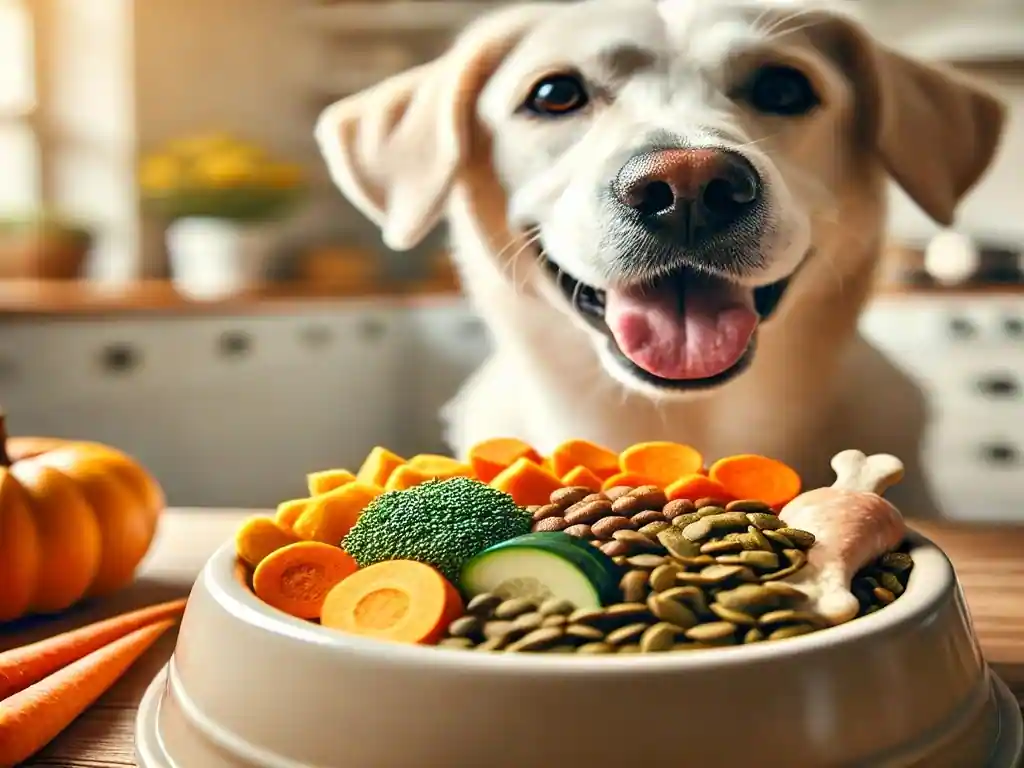DOG
The Comprehensive Guide to Gray Husky Puppy: Puppies, Prices, Care and More

Introduction
Gray Huskies are probably one of the most breathtaking variations of the Siberian Husky breed, drawing everyone with their marvelous exterior and lively personalities.
This lengthy article will cover everything you need to know about Gray Huskies, including details about their puppies, price, health, and whether or not they are good family dogs. We will even indicate some frequently asked questions about their grooming and color stages.

Gray Husky Puppy
Gray Husky puppies exude adorability and energy. What makes them unique is their striking silver-gray coat combined with expressive blue eyes, which gives them that extra special something that seems to capture the hearts of dog enthusiasts. These puppies are usually full of life and jolly, making them suitable for families that are used to an active life.
Things to Know About Gray Husky Puppies
- Appearance: Gray Husky puppies usually have thick fur, ranging from a silvery light shade to dark charcoal. The fur is dense and plush, providing insulation and keeping them warm in freezing weather. The coat may change in color and texture as they grow, but gray is usually the one feature that is always prevalent.
- Temperament: Gray Husky puppies are very energetic and full of enthusiasm. They are brilliant and would need much mental activity to apply their intelligence. Their playful disposition makes them great companions for children and other pets, though they may be something of a tick in their reality sometimes.
- Training Needs: Gray Husky puppies need socialization and training from an early age. They exhibit qualities of reasonable intelligence, with stubbornness and independence creeping in at times. This breed responds only to positive training. Consistent early training is vital in helping them emerge as mature and well-designed adults.
- Exercise Requirements: Gray Husky puppies are active and need ample exercise. Regular playtime walks and interactive games will help keep them healthy and merry. Without enough activity, they get bored and develop destructive behavior.
Gray Husky Puppy Price
The price of a Gofy puppy differs from one breeder to another. It is determined by various factors, including the breeder’s reputation. The puppy’s lineage will guide you in knowing the price range and what to expect when buying a gray husky puppy.
Price Range and Factors Affecting Cost
- Average Price: The Gray Husky Puppy will cost approximately $600 and $1,200. The price will vary depending depending on the reality of the bloodlines.
- Breeder Repthe mutation: Puppies by good breeders are mostly a bit expensive. Their high prices are due to the quality of the breeding procedures, health testing, and socialization. Good reputations among the breeder will raise a healthy, well-socialized puppy in terms of temperament.
- Lineage and Pedigree: Huskies with champion bloodlines or outstanding pedigrees are at the higher end of the price range. Usually, these dogs are explicitly bred with traits that a breeder would want to see in a show ring or as working dogs.
- Geographic Location: Prices depend on your place of residence. Where there is a shortage of this breed, prices will likely be more expensive due to greater demand.
- Uncommon Coloration: Gray Huskies with uncommon coat patterns or exceptional features like bright blue eyes can fetch higher prices than the rest. Unique markings and very rare color mixes tend to have some influence on overall pricing.
White and Gray Husky with Blue Eyes

The White and Gray Husky with blue eyes is a very stunning variant of the dog breed. It is one of this breed’s most preferred and sometimes highly-priced color combinations.
Characteristics and Appeal
- Looks: White coat with gray spotted/patched. The contrast between the white and gray fur and their bright blue eyes gives them a dramatic and outstanding look. The blue eyes themselves add an enchanting factor to the look.
- Rarity and Demand: Huskies are considerably rare due to their distinctive coloration; hence, the demand and price are higher. People usually buy them due to their striking appearance, as they need an attractive pet.
- Care and Maintenance: Iuskies, in general, are predominantly white, and gray huskies have blue eyes. They are bare dogs of grace, beauty, proportion, and contour, requiring consistent care and maintenance. This means consistent and proper grooming, exercise, and healthcare attention to help them remain in the best shape possible.
Health Care of Gray Husky
It encompasses the core aspects of health care, such as regular vveterinarian visits a balanced diet, and good grooming. Knowing your gray Husky’s health needs helps you afford proper care for proper care for your furry friend.
Key Healthcare Considerations
- Vetting Follow-up Visits: Gray Huskies need routine vet visits to ensure general healthiness. Routine visits will let you catch most potential health complications in their infancy and ensure that shots, preventatives for fleas and ticks, and teeth are current.
- Diet and Nutrition: The health of a Gray Husky dramatically depends on a balanced diet. Quality dog food that answers their nutritional requirements will keep them with a glossy coat, brilliant eyes, and high energy levels. Keep them away from junk food and human leftovers, such as chocolate, grapes, and onions, which are poisonous to dogs.
- Grooming: Gray Huskies have a dense double coat that requires grooming. Their fur should be brushed weekly to prevent matting and control shedding. They shed their undercoat twice a year, and during this time, their coats require more frequent brushing to maintain good condition.
- Exercise and Mental Stimulation: Huskies are active dogs and require quite a lot of exercise and mental stimulation. Healthful exercise should include routine walk time with an owner, exercise breaks, and challenging toys to keep them physically and mentally fit. When they receive insufficient activity, they can learn to possess behavioral problems or suffer from boredom.
- Health Issues: Gray Huskies can cause health issues like any dog breed. Common concerns include hip dysplasia, eye disorders like cataracts, and skin issues. Regular veterinary care and a healthy lifestyle will help reduce the risks.
What Color Is Husky Gray?
A husky gray is an excellent term for the Siberian Huskies’ gray range. It is this coloration that the dog breed has become elegant and striking among the others; hence, it is one of the top popular breeds within the population of dog lovers.
Understanding Gray Color Variations
- Shades of Gray: HuHusky gray can range from light silver to dark charcoal due to the many pigments applied in its coats. Such gray coloring can be one solid color or peppered with other colors, like white and black.
- Genetic Factors: This varies genetically depending on how light or dark a shade of gray a Husky can be. Different breeding lines and genetic combinations can result in various intensities and hues in the coat of gray.
- Maintenance: Whatever shade of gray your Husky is, most use regular grooming to keep them in good shape. Regular brushing keeps their shedding under control and maintains the luster of their gray fur.
Is a Gray Husky a Good Family Dog?
Gray Huskies are friendly and energetic, so they can be excellent family dogs for the appropriate family. Still, one must be very aware of one’s needs and characteristics to know if they suit one’s family.
Pros for a Gray Husky as a Family Dog
- Playful and Energetic: Gray Huskies are lively and like to play with children and other pets. Their energy makes them fine partners for active families who enjoy outdoor activities.
- Loyal and Affectionate: Huskies are believed to be faithful and affectionate. They quickly become attached to family members and give them their full attention.
- Intelligent and Trainable: Though independent, Gray Huskies are smart and trainable. They quickly become attached to family membership, are well-behaved, and adjust quickly to family life.
Cons for a Gray Husky
- High Exercise Needs: Huskies are dog breeds with a high need for exercise. They require adequate physical activities and mental stimulation to be healthy and happy. Therefore, families with a lot of engagement will need to be sure they can satisfy these needs.
- Shedding and Grooming: They have a heavy coat and require consistent grooming, especially during the change of seasons. This will aid in controlling their shedding and maintaining the coat in good condition.
- Ind
ependent Nature: Independence and strong will are among the most critical aspects. They can be pretty stubborn, which is often challenging. Consistent training with positive reinforcement is the way to go in controlling control.
FAQS
Are Gray Huskies High Maintenance?
The Gray Husky is neither low nor too high compared to some breeds. Therefore, you can tell how your time and effort will be put into their needs by familiarizing yourself with their requirements for grooming, exercise, and health.
Maintenance Requirements
- Grooming: A Gray Husky has a double coat and thus requires regular combing. Heavily shedding is observed during the seasonal changes; hence, you may need to groom more frequently.
- Exercise: Huskies need a lot of exercise to stay fit and agile. They require more regular walks, playtime, and engaging activities that make them sweat.
- Mental Stimulation: Avoiding boredom with huskies’ mental stimulation is possible. Playthings that can stimulate them include interactive toys, training sessions, and engaging activities that keep them shaped in their mind.
- Health Care: Normal veterinarian visits and diet are essential for Husky’s well-being. After all, though not exceptionally high maintenance, a Husky will need the owner’s commitment to his general well-being.
How Long Should You Walk Your Gray Husky?
Gray Huskies are a high-exercise breed that requires significant physical activity for health and happiness. Know how much exercise your dog needs to provide the correct amount o.
Recommended Exercise Routine
- Daily Exercise: Gray Huskies should have at least 1 to 2 hours of exercise per day, which can be split between several walks, plays, or runs.
- Kinds ofise: Nice exercises include jogging, hiking, and playing fetch. Huskies like to have a job or something to do, which makes things like active play and training very effective.
- Need for Consistency: If used constantly, they would maintain a good energy level, and behavioral problems would not develop. Without consistency in exercise, they usually get bored and develop destructive activities.
Can Huskies Be Gray?
Yes, Huskies can be gray. Gray is one of the many colors that the Siberian Husky may have. It ranges from light silver to dark charcoal and is widespread.
Gray Color in Huskies
- Range of Shades: Gray’s color ranges from light silver to deep charcoal, which is why it offers unique elegance in a varied manner and is much admired.
- Genetic Factors: The actual color of a Husky’s coat is genetically determined. Different lines of breeding and generations can result in variations in the intensity and hue of the grey jacket.
What Color of Husky Is the Most Expensive?
Prices for Huskies can range around Calvary, depending on the breeder’s reputation. Some colors and patterns are scarce and, thus, more expensive.
- Agouti: This is strange since their massive, wildish wolf-like appearance with banded fur is often the most expensive due to the rarity of the particular color.
- Pure White: One of the most expensive kinds of huskies is the one with a pure white coat. This is unusual, and much wanted.
- Rare Patterns: Huskies’ value also depends on the patterns or unique markings on their bodies. For example, huskies with unusually striking blue eyes and coat patterns may cost more.
Read More
Cat Breeder Scotland | A Guide to Finding Your Feline Companion.
Conclusion
Gray Huskies are irresistible dogs with a beautiful coat and an alive personality. Knowing their needs, from puppy pricing to health and exercise requirements, keeps you well-informed before bringing one into your home. Whether their marvelous appearance or energetic nature attracts you, Gray Huskies can make for good companions and, hence, very biddable to the right family. Take care of them, pay attention to their needs, and provide the exercises they need, and you will secure a happy, healthy life for your Gray Husky.
15 Interesting Facts About the Golden British Shorthairs Cat
DOG
Can Dogs Eat Honey Turkey Deli Meat? Risks, Benefits, and Safe Feeding Tips Explained

Well, dogs are man’s best friends, and most owners would never resist feeding their furry little friends a few parts of what they take for themselves. Among the many things that most owners would ask about include whether or not honey turkey deli meat is safe for dogs to be given. This tasty treat, though highly favored by people, will have different impacts on their dogs.
In this comprehensive guide, we’ll explore whether honey turkey deli meat is safe for dogs, its potential risks, and better alternatives. We’ll also address related queries such as whether dogs can eat it daily or if it’s safe to give them old deli meat.
What Is Honey Turkey Deli Meat?
Honey turkey deli meat is a processed meat that is made from turkey, given a flavor of honey, or a honey-based glaze, and it comes in sandwiches or as an occasional snack. Although this meat is convenient for humans and tastes good, it may be a bad constituent for dogs.
Nutrition Value
Honey turkey deli meat provides a fair amount of protein, which is good for dogs. However, it is less suitable for frequent supplementation in a dog’s diet due to higher levels of sodium, preservatives, and sugar. Some common ingredients include the following:
- Protein: Turkey is a good source of protein. These will keep your muscles healthy.
- Sodium: Deli meats contain a lot of salt. Thus, they can cause dehydration or kidney stress from these salty foods.
- Honey: Although honey is safe to feed dogs in tiny quantities, it has too much sugar, which may cause obesity conditions or dental problems.
- Additives: Processed meats contain numerous nitrates, nitrites, and artificial flavors that add hazards to health.
How It Differs from Plain Turkey
In contrast, turkey or cooked turkey is non-processed whereas deli meat is processed; also, it has added flavoring preservatives and fillers. All these added ingredients make Honey Turkey Deli less wholesome for dogs.
Why the Difference Matters
Knowing what honey turkey deli meat is and how it differs from plain turkey helps pet owners make informed choices. However, a random small bite is not hazardous for your dog, yet it is not a substitute for a strong and balanced diet.
Can Dogs Eat Honey Turkey Deli Meat?
Yes surely, but it must be served in minor quantities. However, it is not an ideal food in any aspect. Let’s highlight its benefits and risks.
Possible Advantages
- Protein Enrichment: Turkey is a low-fat protein that supports muscle growth and maintains energy levels.
- Appealing Snack: Dogs generally enjoy the taste, making it an appealing occasional treat.
Potential Risks
- High Sodium Level:
Deli meats, like honey turkey, are preserved in salt, which dehydrates, increases thirst, and eventually leads to kidney problems in dogs. - Additives & Preservatives:
They possess additives such as nitrites & nitrates that are toxic for dogs even in smaller amounts. - Sugars from Honey:
Although honey is nontoxic to dogs, the sugar content within the honey-glazed turkey causes obesity and dental problems. - Lethal Seasonings:
Some deli meats may even add garlic or onion powder which can cause anemia in dogs.
Safe Practices
If you want to give honey turkey deli meat to your dog:
- Check the ingredient label for harmful additives.
- Limit it to a small piece.
- Avoid making it a routine meal.
Can Dogs Eat Honey Turkey Deli Meat in Routine?
Feeding honey turkey deli meat to dogs daily is not recommended. Here’s why:
Health Risks of Daily Intake
- Sodium Overload:
The higher levels of sodium can result in hypertension, dehydration, and renal failure.
- Caloric Mismatch:
Honey turkey deli meat is a high-calorie-consumed product. Excessive feeding of this kind of foodstuff among animals may bring about a case of caloric excess, eventually leading to overweight or obesity.
- Additive Accumulation:
Preservatives and artificial flavors will accumulate in your dog’s body and sometimes bring problems in the long term. - Digestive problems:
Sometimes, processed meat can cause gastrointestinal upset in a dog like diarrhea or vomiting.
How to Safely Provide Treats
Instead of making honey turkey deli meat a daily staple, consider these guidelines:
- Treats, including deli meat, should not exceed 10% of your dog’s daily caloric needs.
- Use fresh, raw turkey or dog-specific treats for healthier options.
- Consult with your vet to give the diet that fulfills your dog’s needs.
Can I Feed Expired Deli Meat to My Dog?
It is not advisable to feed your dog with expired deli meat. Unlike humans who may sometimes tolerate food that has gone bad, dogs are quite sensitive to spoiled food.
Hazards associated with expired deli meat
- Bacterial Contamination
It contains harmful bacteria that include Salmonella or Listeria, which creates food poisoning. - Growing Fungi
Produced through meat decomposition, these mycotoxins can exert high levels of toxicity risks on canines and possibly develop clinical manifestations including emesis, muscular tremors, or convulsions. - Decomposition products
When meat decomposes, it emits substances undigested and thus potentially hazardous for consumption. These elements can also lead to a dog vomiting.
Symptoms of Food Poisoning in Dogs
- Vomiting
- Diarrhea
- Lethargy
- Fever
- Loss of appetite
Best Practices
Always check deli meat for freshness before giving it to your dog. If it is slimy, discolored, or smells sour, just toss the meat-it’s not worth risking your dog’s health.
Healthy Alternatives to Honey Turkey Deli Meat for Dogs
Of course, if you just want to give your dog a treat, honey turkey deli meat is one of the far healthier and safer choices.
Fresh Protein Sources
- Boiled Plain Turkey:
Unseasoned, skinless turkey is a lean protein that dogs love. - Boiled Chicken:
It is a low-fat easily digestible treat, suitable for dogs with sensitive stomachs.
3. Fish:
Omega-3 fatty acids benefit your skin and coat with cooked fish sources like cod or salmon.
Store-Bought Dog Treats
Make use of minimal processing of natural dog treats. Select food products having flavorless, no preservative, or salty flavors.
Fruits and Vegetables
Some fruits and vegetables can be great snacking for dogs, such as:
- Carrots
- Apples (without seeds)
- Blueberries1500 calories a day dog: How to Accurately Calculate Your Dog’s Daily Caloric Needs for Peak Health
FAQs About Dogs and Honey Turkey Deli Meat
1. Does honey turkey deli meat fit dogs to be consumed?
Yes, in moderation, dogs can eat honey turkey deli meat but it is not ideal for long-term consumption. Deli meat is high in sodium, sugar, and preservatives that are toxic if fed in excess.
2. What’s the risk of honey turkey deli meat to dogs?
Some risks include the very high sodium that leads to dehydration or over-working of the kidneys, sugars in the honey glaze can stimulate obesity and tooth decay issues, and harmful preservatives or spices including garlic or onions which could be toxic for dogs.
3. How many honey turkey deli meat slices can I feed my dog?
This should be fed as an occasional reward in very small pieces. A few bites will often be well tolerated by most dogs but watch closely for signs of reaction to this food: vomiting or diarrhea.
4. May be given honey turkey deli meat?
Feed honey turkey deli meat to your puppies as its their digestive system is sensitive, and the sodium and additives in the processed meat might cause a stomach upset or even some long-term health damage.
5. Is there an alternative to honey turkey deli meat for dogs?
Yes, the healthier alternatives could be boiled chicken, cooked turkey, or even store-bought dog treats with natural ingredients. These alternatives have protein minus the harmful additives that sometimes come along with deli meats.
6. What do I do if my dog eats too much honey turkey deli meat?
Watch for excessive thirst, vomiting, diarrhea, or lethargy in your dog if it ingests an excessive amount of honey turkey deli meat. Call your veterinarian at once if symptoms occur.
Conclusion
It is not toxic to dogs but by no means a healthy food. Small amounts often do not cause problems, but regular consumption usually leads to health issues, including sodium overload, obesity, and digestive problems.
Fresh, raw meats or vet-approved treats for your dog will determine better health. A well-balanced diet should be a priority, suited to your dog’s specific needs, of course.
Need more ideas on how to keep your furry friend healthy and happy? Subscribe to our newsletter to get expert tips!
Senior Dog Adoption in North Carolina: Benefits, Myths, Resources, and Care Tips
DOG
The Ultimate Guide to Dog Food Toppers: Solutions for Sensitive Stomachs, Improved Digestion, and Balanced Nutrition

INTRODUCTION
A sensitive doggy has got to have good digestive health if it is going to enjoy the best life possible. Vomiting, diarrhea, or bloating could very well be a dog that suffers from an easily upended stomach. Such occurrences could both hurt your pet and even yourself.
The good thing is that diet can cure most digestive issues, and lately, a popular treatment has been toppers over commercially sold dog foods.
We go into the world of dog food toppers for sensitive stomachs: what are they, how do they help your dog, choose the right ones, make some homemade versions, and other relevant questions such as “What is the best thing to feed a dog with a sensitive stomach?” and expert tips on maintaining your dog’s digestive health.
What Are Dog Food Toppers for Sensitive Stomach?
Dog food toppers for sensitive stomachs are specifically designed supplements that can be included in your dog’s regular dinners to support digestion and pacify stomach issues. They offer assistance to adjust the diet by giving extra supplements, moisture, and fiber.
These toppings are particularly advantageous for dogs that are experiencing gastrointestinal issues like bloating, heartburn, or constipation. Toppers come in different shapes, such as powders, fluids, and damp foods, and are usually made with conveniently digestible ingredients.
Sometimes dogs with sensitive stomachs may not be able to absorb nutrients or get even digestive symptoms. Adding the correct topper can make feeding time easier for you since it will soothe your stomach, improve digestion, and make meals more attractive to their dogs. Most of them have designed gentle digestive systems without causing discomfort.
Why do dogs have sensitive stomachs?
Before talking about all the different benefits of dog food toppers for sensitive stomachs, let’s know why the digestive system of certain dogs becomes sensitive. The reasons are given below:
- Age: With advancing age, a dog’s digestive system may become slower; therefore, their stomach could face such issues as indigestion and bloating.
- Dietary Allergies: Dogs may develop sensitivity to some commercial dog food ingredients, such as grains, fillers, or artificial additives.
- Food Allergies: Common reasons for digestive upsets include food allergies, which commonly cause problems in dogs due to allergies to proteins such as chicken, beef, or fish and have caused vomiting, diarrhea, or even skin issues.
- Stress & Anxiety: They may also be a reason behind gastrointestinal malfunction. They may be developed by a slight change in the routine or environment.
- Parasites or Illness: Any bacterial or parasitic infection can also be a reason behind a disturbed stomach. It may result in diarrhea or vomiting.
The Benefits of Dog Food Toppers for Sensitive Stomach
The addition of dog food toppers for sensitive stomachs to the regular diet of your dog can provide multiple health advantages, more specifically for dogs with digestive concerns. Some of the main advantages include:
1. Improved Digestion and Absorption
So when feeding your dog food toppers, that come mostly in the forms of those ingredients that would ease the digestive system or gut, they’d use pumpkin, sweet potatoes, and ginger. Those gentle products are easy to stomach with better digestion to promote higher absorption of your pet. Thus, pumpkin contains a compound like soluble fiber to regular bowel movements and cure constipation among others.
2. Increased Palatability
Other signs a dog is sensitive include that they usually do not eat much. The pain the animal experiences after eating usually deters them from eating the same food again. Dog food toppers make mealtimes appealing and appetizing. In the case of a fussy eater, adding flavor is both appealing and encouraging them to eat.
3. Balanced Nutrients
Most of the available commercial dog foods are rich in fatty, protein,n, or carb content and are not suitable for a sensitive stomach. The dog food topper can help to balance that food by providing essential nutrients like vitamins, minerals & fiber. It will maintain digestion, and the moisture that this food imparts can prevent dehydration, especially in case the dog is suffering from diarrhea or excessive vomiting.
4. Hydration
A very common condition with dogs experiencing digestive issues, such as following a vomiting or diarrhea episode. Wet food toppers, toppers high in moisture, ensure that your dog receives adequate hydration. This, of course, is crucial to your dog’s general health and well-being. Some popular toppers, both nourishing and hydrating, are bone broth and pureed pumpkin.
Homemade Dog Food Toppers for Sensitive Stomach: A Healthier Option
If you are in the process of wanting to be proactive about your dog’s sensitive stomach, making toppers at home for your dog’s food may help in the process. That is because by doing so in your kitchen you are always in charge of the ingredients used and guarantee your dog gets the most digestible foods possible. Below are some of the best homemade dog food toppers for sensitive stomachs.
1. Pumpkin Puree
Undoubtedly, pumpkin is one of the most important remedies for a sensitive stomach. It is abundant in fiber and helps to smooth the digestion process and firm up stools. It is also a good source of vitamins such as vitamins A & C, that can keep your dog healthy. It is better to prepare fresh pumpkin or sugar and spices-free canned pumpkin puree as a food topper.
2. Sweet Potatoes
They are an awesome source of vitamins and antioxidants, providing immunity to boost your dog’s immune system. What is nice is also that they’re very full of fiber, which in itself makes them relatively easy to digest. Good if added at a time the dog has up, they’ll soak into anything, baking or boiling, and mash them into the mix.
3. Bone Broth
Another alternative is bone broth which can be healthy digestible to soothe the dog’s stomach and also help hydrate them. Bone broth is rich with essential minerals, including calcium and magnesium, very helpful to dogs, that get sick or develop digestive troubles. Instead, use homemade, low-sodium broth to avoid any added preservatives.
4. Cooked Chicken or Turkey
For instance, lenient proteins such as chicken and turkey work well on your dogs with sensitive stomachs because they are very easy on their digestive system, and they contain some of the most important amino acids to your dog. You just cook the meat, remove the skin and the bones, chop them up into pieces, then top your dogs’ regular meals off with these protein sources.
5. Rice and Carrots
Rice, especially white rice, is the best for an upset stomach since it is bland. Steamed carrots are a soft addition to the digestive tract, so putting them together in a meal is a healthy, easy way to digest food. It can calm down your dog’s stomach and make digestion easier.
What Is the Best Thing to Feed a Dog with a Sensitive Stomach?
It is very important to make thoughtful food choices when your dog is suffering from stomach issues. Keep in mind the following things while making a selection:
1. Limited Ingredients
Dogs with sensitive stomachs do best on fewer ingredients in foods. A limited-ingredient diet decreases the chances of digestive upset by additives, fillers, or preservatives that may be considered unnecessary. Choose dog food brands whose labels indicate quality by being simple and easy to digest.
2. Easily Digestible Proteins
Better-digestible proteins include chicken, turkey, lamb, and fish. Try to avoid rich meats, which include beef or pork as they are harder on the stomach.
3. High Fiber Content
Fiber is a nutrient that the body needs to aid in digestion and prevent cases of constipation. Foods known to be rich in fiber are pumpkin, sweet potatoes, and oats, through which your dog’s gut will be improved.
4. Avoid Common Allergens
Many finicky-stomached dogs are also allergic to such things as grains, dairy, or proteins. If your dog appears to have a food allergy you may search for grain-free or hypoallergenic dog food, designed to contain fewer allergens.
How to Choose the Right Dog Food Toppers for Sensitive Stomach
The Difference At other times, it won’t matter what comes into the house; just the perfect one of dog food toppers for a sensitive stomach. Here’s how to pick.
- Ingredients: Select toppings that are naturally prepared and easily digestible. They must causally interact with the stomach.
- Form: The preference of your dog should be a consideration in deciding between wet, dry, powder, and liquid form.
- It also brings in additional nutritional value including fiber and vitamins and minerals for wellness.
- Avoid artificial additives: Avoid any topper that contains artificial colors, flavors, or preservatives because those might irritate sensitive stomachs.A Comprehensive Guide to Simply Nourish Dog Food: Premium Nutrition for Dogs of All Breeds and Stages
FAQ Section about Dog food toppers
Dog food toppers that are best for sensitive stomachs
The best topping on your dog food with pumpkin puree, sweet potatoes, bone broth, and even lean proteins such as chicken or turkey for lightening the belly.
Do homemade dog food toppers calm sensitive stomachs?
Homemade dog food toppers prove good for sensitive stomachs. They let you introduce fresh foods full of nutrients into the diet of your dog without adding preservatives.
How to feed best for a dog with a sensitive stomach?
For a sensitive dog stomach, one should offer the dog very easily digestible proteins, limited ingredients, high-fiber foods, and even hypoallergenic choices. Foods recommended include chicken, sweet potatoes, and pumpkin.
How does a Dog Food Topper affect digestion?
Dog food toppers improve digestion due to ingredients such as fiber, vitamins, and minerals which soothe the stomach, regulate bowel movements, and allow better nutrient absorption.
Do dog food toppers prevent vomiting and diarrhea?
They help by preventing vomiting and diarrhea with digestive health alongside reduced irritation in the gastrointestinal tract. However, symptoms persistent should be examined by a veterinarian.
Are there side effects associated with dog food toppers?
Most toppers for dogs’ food are safe for sensitive stomachs, but an allergic reaction or overconsumption of them may upset your dog’s stomach. Introduce any new toppers slowly and look for signs of negative reactions.
Conclusion
Dog health, in the long term, will depend on whether or not a dog takes proper care of his digestive health. Dog food toppers for sensitive stomachs allow one to have an easily accessed route into supporting dogs easing up their digestive discomfort, absorbing nutrient benefits even more efficiently, and just eating the meals without much issue due to their increased palatability. Pre-made or self-designed home preparation versions require the use of ingredients easy to digest by your dog’s system. You can easily follow the instructions given in this guide to help select the best toppers that can support your dog’s digestive health over the long term.
DOG
A Comprehensive Guide to Simply Nourish Dog Food: Premium Nutrition for Dogs of All Breeds and Stages

Simply Nourish Dog Food has become a trusted choice for pet owners seeking high-quality, nutritious meals for their furry friends. Committed to using natural ingredients and creating recipes tailored to various breeds and dietary needs, Simply Nourish has carved its niche in the pet food market. This comprehensive guide explores everything from its ingredients to specific formulas like Simply Nourish Dog Food Salmon and Simply Nourish Dog Food Small Breed, ensuring your canine companion gets the best nutrition available.
What Makes Nourish Dog Food Stand Out?
Simply Nourish Dog Food emphasizes natural, wholesome ingredients that prioritize your dog’s health. Unlike many commercial dog food brands, it avoids artificial flavors, preservatives, and fillers. The brand’s philosophy centers on transparency, ensuring pet owners know exactly what goes into their dog’s bowl.
By focusing on real meat as the primary ingredient and incorporating nutrient-rich vegetables and whole grains, Simply Nourish delivers balanced meals that support your dog’s overall health.
Dogs thrive on diets that mimic their natural eating habits. Simply Nourish achieves this by using ingredients that provide protein, healthy fats, and complex carbohydrates.
Whether you have a puppy, an adult dog, or a senior canine, the brand offers tailored options to meet their unique nutritional needs. Their range also includes grain-free and breed-specific formulas, catering to dogs with sensitivities or specialized dietary requirements.
Simply Nourish Dog Food Ingredients: A Closer Look
The foundation of Simply Nourish’s success lies in its carefully chosen ingredients. These components work together to provide complete nutrition while supporting your dog’s specific health needs.
Key Ingredients in Simply Nourish Dog Food
- High-Quality Proteins: Deboned chicken, lamb, turkey, and salmon are common protein sources, essential for muscle maintenance and overall growth.
- Whole Grains and Alternatives: Brown rice and oatmeal offer digestible energy, while grain-free options include sweet potatoes and chickpeas for sensitive stomachs.
- Vegetables and Fruits: Ingredients like carrots, peas, blueberries, and cranberries provide antioxidants that strengthen the immune system.
- Healthy Fats: Salmon oil and flaxseed supply omega-3 and omega-6 fatty acids, promoting healthy skin and a shiny coat.
Simply Nourish maintains a commitment to ingredient transparency, with clear labeling and no hidden additives. This ensures pet owners can make informed decisions when selecting the right formula for their dogs.
Simply Nourish Dog Food Salmon Recipe
The Simply Nourish Dog Food Salmon recipe is one of the brand’s most popular offerings, particularly for dogs with skin or coat issues. Salmon is a powerhouse ingredient, rich in protein and omega-3 fatty acids, which are crucial for maintaining a shiny coat, healthy skin, and joint health.
Why Choose the Salmon Recipe?
- Allergy-Friendly: Salmon is a novel protein source, making it an excellent choice for dogs allergic to chicken or beef.
- Rich in Nutrients: Alongside salmon, the formula often includes wholesome ingredients like sweet potatoes and carrots, which provide energy and fiber.
- Flavorful and Nutritious: Dogs love the taste of salmon, ensuring mealtime is both enjoyable and beneficial.
This recipe is ideal for dogs of all breeds and sizes, but its benefits are especially pronounced in dogs with food sensitivities or dull coats. Paired with Simply Nourish’s commitment to natural ingredients, the salmon recipe is a standout option.
Simply Nourish Dog Food Small Breed Formula
Small breeds have unique dietary needs, including higher caloric requirements per pound of body weight and smaller kibble sizes for easier chewing. Simply Nourish Dog Food Small Breed Formula is specifically designed to address these needs while ensuring your tiny companion thrives.
Key Features of the Small Breed Formula
- Smaller Kibble: Perfectly sized pieces make it easier for small dogs to chew and digest their food.
- Higher Energy Density: Provides the extra calories small breeds need in smaller portions.
- Tailored Nutrition: Balanced levels of protein, fat, and carbohydrates ensure optimal energy and health.
This formula is ideal for breeds like Chihuahuas, Pomeranians, and Shih Tzus. It includes premium ingredients like chicken, brown rice, and vegetables, offering the perfect balance of flavor and nutrition.
Grain-Free Options from Simply Nourish
Grain-free diets have gained popularity among pet owners seeking solutions for dogs with grain allergies or sensitivities. Simply Nourish offers a variety of grain-free recipes designed to deliver high-quality nutrition without common allergens like wheat, corn, or soy.
Benefits of Grain-Free Diets
- Improved Digestion: Grain-free options use alternative carbohydrates like sweet potatoes and lentils, which are easier to digest.
- Enhanced Energy Levels: These recipes are rich in proteins and healthy fats, keeping your dog active and vibrant.
- Fewer Allergic Reactions: Grain-free diets can reduce itching, hot spots, and other allergy symptoms.
Popular grain-free options include the Salmon and Sweet Potato formula and the Lamb and Pea recipe. These formulas maintain the brand’s commitment to natural ingredients while catering to dogs with specific dietary needs.
Health Benefits of Simply Nourish Dog Food
Feeding your dog Simply Nourish Dog Food can result in numerous health benefits. The brand’s focus on high-quality ingredients and balanced nutrition ensures optimal well-being for dogs of all ages and sizes.
Key Health Benefits
- Improved Digestion: The inclusion of probiotics and fiber-rich ingredients supports gut health and reduces digestive issues.
- Shinier Coats and Healthier Skin: Omega fatty acids from salmon and flaxseed improve coat quality and alleviate dry, itchy skin.
- Higher Energy Levels: Balanced formulas provide sustained energy, keeping dogs active throughout the day.
- Stronger Immunity: Antioxidant-rich ingredients like blueberries and cranberries boost the immune system.
- Weight Management: Simply Nourish offers specific recipes for weight control, helping to prevent obesity.
With consistent use, many pet owners notice significant improvements in their dogs’ overall health and vitality.
Simply Nourish for Puppies and Senior Dogs
Simply Nourish recognizes that puppies and senior dogs require tailored nutrition to meet their unique needs. Puppies need nutrient-dense food to support rapid growth, while senior dogs benefit from lower-calorie, joint-friendly diets.
Puppy Formulas
- Include DHA for brain development.
- Offer higher protein levels for muscle and bone growth.
Senior Formulas
- Contain glucosamine and chondroitin for joint health.
- Provide lower fat content to maintain a healthy weight.
These life-stage-specific formulas ensure your dog receives the nutrition they need at every stage of life.
How to Transition Your Dog to Simply Nourish
Switching your dog to a new food brand requires a gradual transition to avoid digestive issues. Follow these steps for a seamless switch:
- Days 1–3: Mix 25% Simply Nourish with 75% of your dog’s current food.
- Days 4–6: Increase to 50% Simply Nourish and 50% current food.
- Days 7–9: Mix 75% Simply Nourish with 25% current food.
- Day 10: Fully switch to Simply Nourish.
This gradual approach helps your dog adjust to the new formula without discomfort.
FAQs About Simply Nourish Dog Food
Is Simply Nourish Dog Food grain-free?
Yes, Simply Nourish offers grain-free recipes for dogs with grain allergies or sensitivities. However, not all their recipes are grain-free, so be sure to check the product details.
What types of proteins are used in Simply Nourish Dog Food?
Simply Nourish uses high-quality proteins like deboned chicken, lamb, turkey, and salmon. These proteins help support muscle maintenance and overall growth.
Does Simply Nourish have special formulas for small breeds?
Yes, Simply Nourish offers a Small Breed Formula that features smaller kibble sizes and higher energy density, tailored for the unique nutritional needs of smaller dogs.
Are there formulas suitable for puppies and senior dogs?
Yes, Simply Nourish has specific formulas for both puppies and senior dogs. Puppy formulas include DHA for brain development and higher protein levels for growth, while senior formulas include glucosamine for joint health and lower fat content.
What are the benefits of the Simply Nourish Salmon Recipe?
The Salmon Recipe is rich in omega-3 fatty acids, making it ideal for dogs with skin and coat issues. It also includes nutrient-rich ingredients like sweet potatoes and carrots for added energy and fiber.
Where can I buy Simply Nourish Dog Food?
Simply Nourish Dog Food is available at major pet retailers like PetSmart and through various online e-commerce platforms.
Can switching to Simply Nourish cause digestive issues for my dog?
To avoid digestive discomfort, transition gradually over 10 days by mixing the new food with your dog’s current food, starting with 25% Simply Nourish and increasing to 100% by Day 10.
Are there grain-free alternatives for dogs with sensitivities?
Yes, Simply Nourish offers grain-free recipes such as the Salmon and Sweet Potato formula and the Lamb and Pea recipe, which are designed to be easier on sensitive stomachs.
Conclusion: Is Simply Nourish Dog Food Right for Your Pet?
Simply Nourish Dog Food combines premium ingredients with thoughtful recipes to provide top-notch nutrition for dogs of all breeds and life stages. Whether you choose their Salmon recipe for its skin and coat benefits or the Small Breed formula for your tiny companion, Simply Nourish is a reliable choice for ensuring your dog’s health and happiness. By prioritizing natural ingredients and balanced nutrition, the brand empowers pet owners to give their dogs the best possible care.






